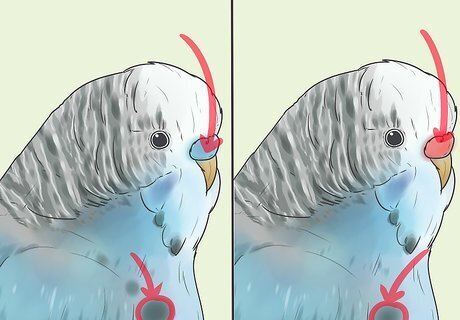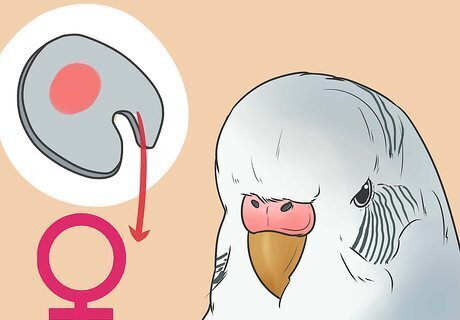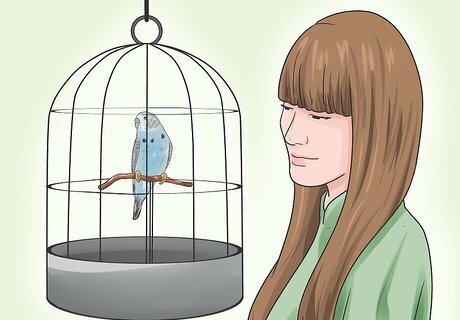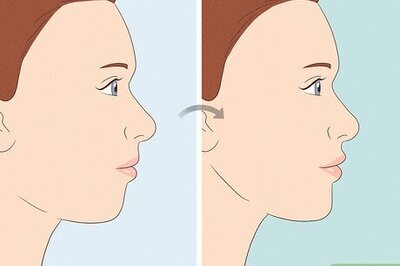
views
Using Color to Identify Sex

Find the budgie's cere. The cere is a fleshy covering which is located directly above its beak. The budgie's nostrils are found on the cere (they look like two in-depth holes) making the cere easy to find. While most budgie's beaks are a yellowish color, the cere is a certain color depending on the bird's sex.

Identify a male budgie. Most male budgies in the breeding mood have a bright or royal blue cere. Sometimes, the vibrant color can appear purple-blue. This color will lighten when the budgie is not in the breeding mood. If you've identified your budgie as male and notice his cere turn brown, he may have a medical condition.

Identify a female budgie. A female adult budgie's cere is usually white, pink or pale blue. As she becomes more fertile and ready to produce eggs, the cere will become a darker tan or brownish in color. If the budgie is fertile and ready to breed, you may also notice the cere thicken and become crusty. The cere build up can be about a centimeter thick.

Consider the age of your budgie. If your budgie is less than 4 months old, it will have immature colors respective to their sex. Before this time, the colored area that shows sex will be pink or purple on a male and white or pale blue on a female. If your budgie hasn't had its first molt, has dark button eyes, and has bars coming from its head to cere, then it's less than four months old. If your budgie is immature or less than 4 months old, the cere on males will slowly turn deep blue and females will keep white or pale blue before showing tan.

Understand the challenges of using color to identify the sex. In addition to changes in color based on breeding mood, a budgie's cere may change for a number of other reasons. Female budgies may have hormonal imbalances that display a light blue cere for a long time or their environment may not be suitable for breeding. Some budgies have genetic mutations that show color differently in males. Recessive pieds and INO (albino, lutino and yellow face albino) variety males will have a pink cere as well as a few other mutations. For example, male albino budgies will have a pink cere color.
Identifying the Sex Using Other Methods

Listen to your budgie. Males are known for being much noisier than female budgies. They will chirp or sing and the songs can be quite long. While female budgies make sounds too, they usually sound angry and less musical. However females can be just as cheerful just as males may be grouchy. Keep in mind that behavior should not be solely taken into consideration when determining sex. Both sexes can display the same behavior.

Watch your budgie's behavior. Male budgies frequently bob their heads up and down or tap their beaks against their cage. They'll appear playful and outgoing. Female budgies may seem more aggressive if they're in the mood to breed, subdued, or if they're fertile. You may notice a male budgie tap against a female and regurgitate food to her. Don't worry. This is normal bonding behavior and will occur between same-sex pairs, too.

Ask someone knowledgeable. When you buy your budgie from the breeder or dealer, ask the budgie's sex, though be aware not all breeders are informed, especially if colony breeding. You can also purchase inexpensive DNA kits that also reveal the budgie's sex. Don't forget that you can ask your veterinarian to determine the sex of the budgie. This will be easier if the vet is familiar with treating birds.

















Comments
0 comment